Smart Office Heat Zone Monitoring
A leading corporate office in Pune faced challenges in maintaining consistent air quality and thermal comfort across their workspace. Despite modern central AC systems, certain areas experienced hot or cold zones, leading to uneven cooling, higher energy bills, and employee discomfort.
The organization wanted a data-driven solution to:
Monitor indoor air quality (AQI) continuously.
Detect heat zones in real time.
Optimize central AC airflow and energy usage.
Improve employee comfort and workplace productivity.
To address these goals, Macnman Technologies deployed a LoRaWAN-based IoT monitoring network, providing actionable insights for efficient climate control and cost savings.
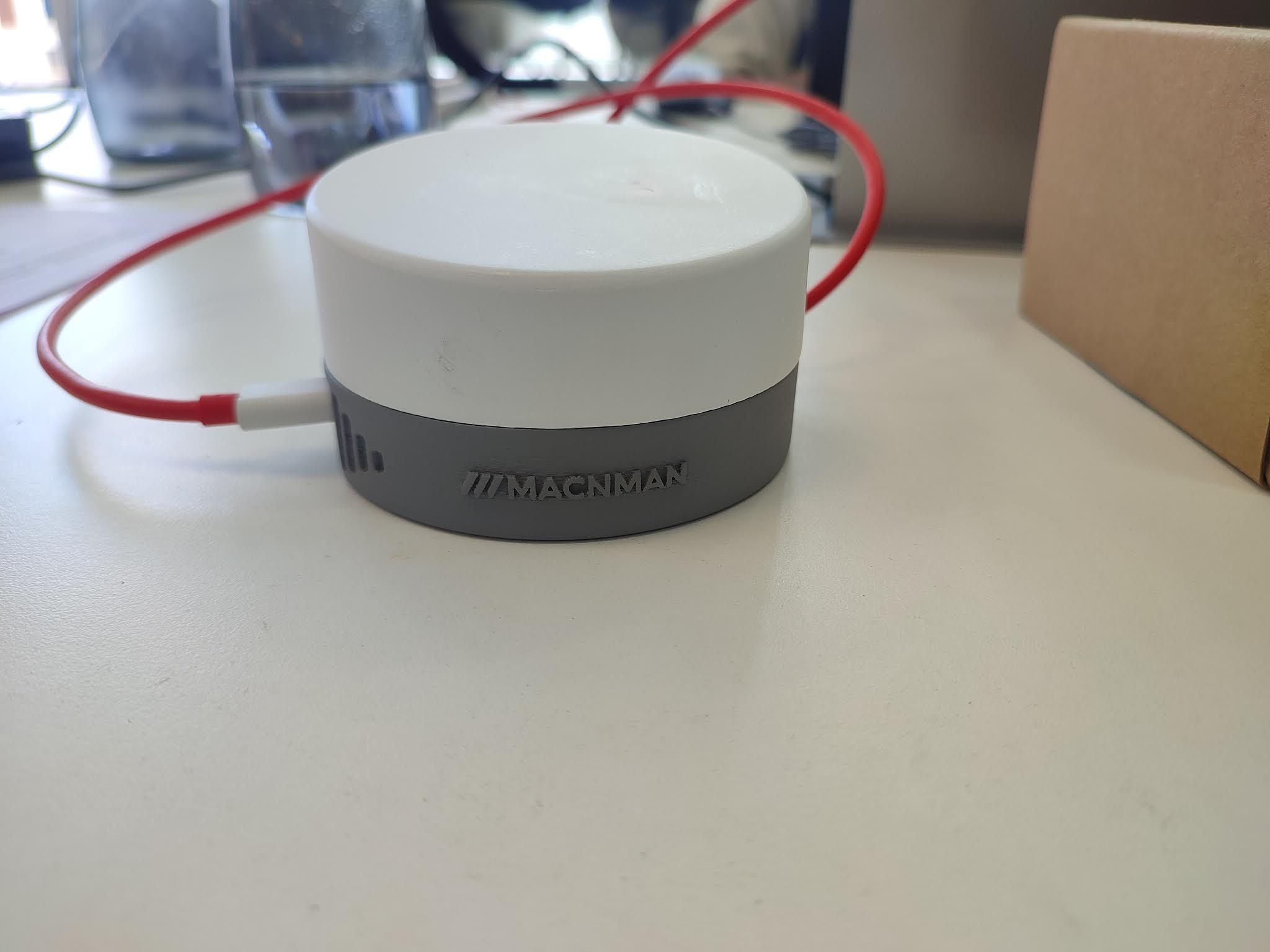
Problem Identified: Poor Air Quality & Worker Discomfort
Large corporate offices often struggle with uneven temperature distribution and poor air quality, which can affect employee comfort, productivity, and energy efficiency

Hot & Cold Zones
Certain office areas experienced inconsistent temperatures, affecting employee comfort and productivity.

Employee Discomfort
Uneven airflow led to complaints and reduced workplace satisfaction.

Lack of Real-Time Insights
No system existed to monitor air quality or heat zones continuously, making optimization reactive

Rising Operational Costs
Overcooling or overheating spaces resulted in unnecessary electricity expenses.
Proposed Solution: Smart IoT Monitoring for Office Comfort & Energy Efficiency
To tackle uneven temperatures, poor air quality, and high energy usage, Macnman Technologies deployed a LoRaWAN-based IoT monitoring system across the corporate office:
- 01
Real-Time AQI Monitoring
Sensors track air quality in all office zones, detecting pollutants and ensuring a healthy workspace.
- 02
Heat Zone Detection
Temperature sensors map hot and cold spots, providing actionable insights to optimize central AC airflow.
- 03
Data-Driven AC Optimization
Facility managers use live data to adjust AC settings, reducing overcooling and energy waste.
- 04
Automated Alerts & Insights
System sends instant notifications when air quality or temperature exceeds set thresholds, enabling timely interventions.
- 05
Long-Range LoRaWAN Connectivity
Low-power, long-range sensors communicate seamlessly across multiple floors without additional wiring.
- 06
Centralized Dashboard & Reporting
Integration with a central SCADA or facility management dashboard provides visualization, historical trends, and energy optimization recommendations
Architecture: LoRaWAN-Based Smart Office AQI Monitoring

Deployment of LoRaWAN IoT-Enabled Air Quality System
The deployment was executed across multiple office zones in Pune, integrating Macnman’s LoRaWAN ecosystem for seamless performance:

MacSync LoRaWAN AQI Node
Installed across work areas and meeting rooms to track CO₂, PM2.5, and VOC levels, ensuring a healthy workspace.
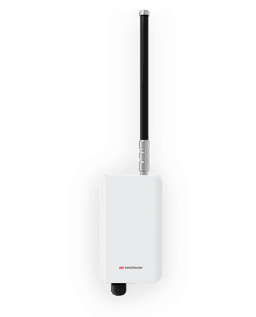
Industrial LoRaWAN Gateway
Provided long-range data transmission across the entire warehouse complex, ensuring seamless cloud connectivity and backup storage..
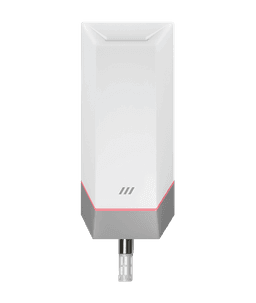
Temperature and Humidity Sensors
Strategically placed to map thermal zones, identify hot/cold spots, and guide HVAC optimization.
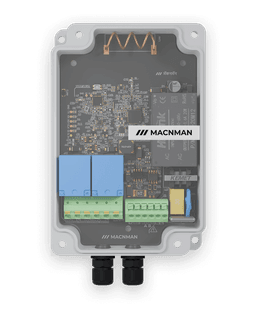
MacSet Controllers
Used to collect sensor data, manage Andon lights, and communicate over LoRaWAN for visual status indicators.

Challenges: From Data Gaps to Reliable Indoor Intelligence
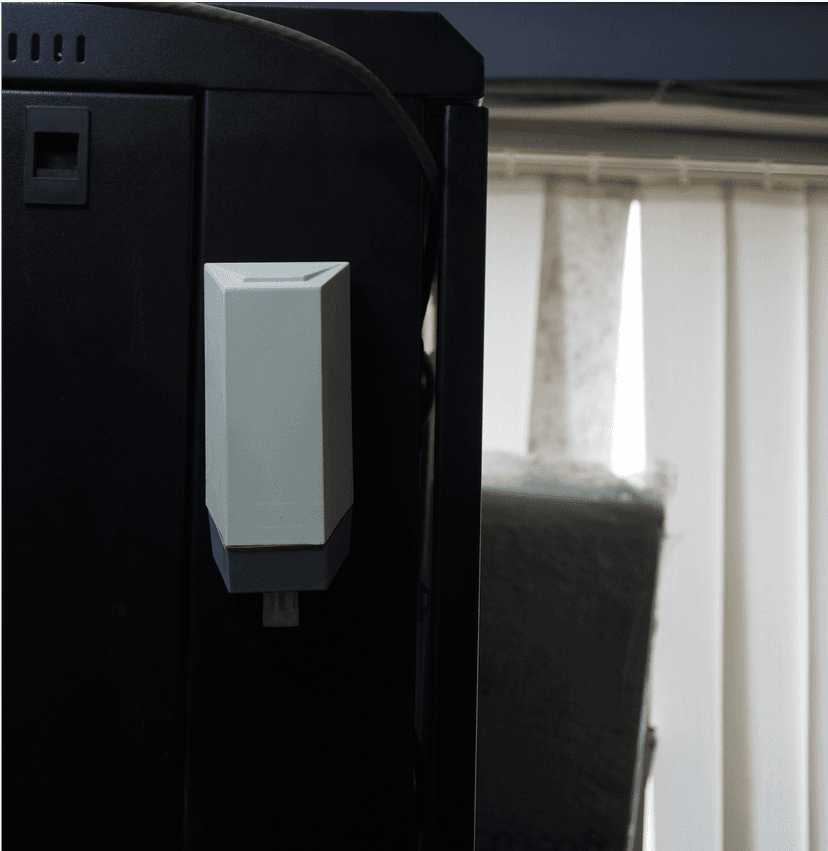
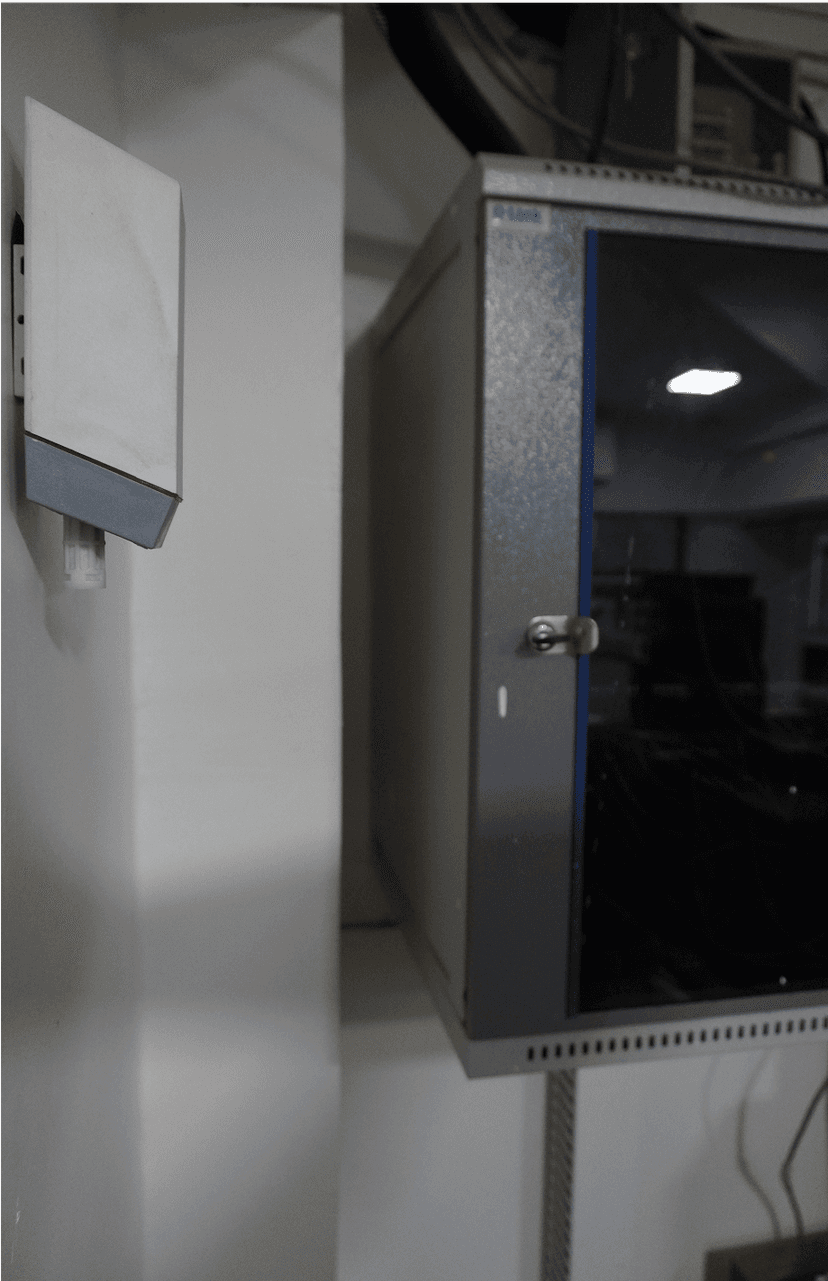
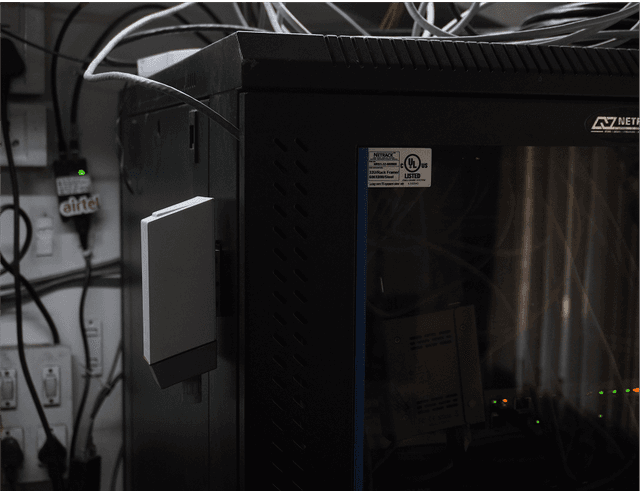

Signal Interference in Office Layouts
LoRaWAN signals faced interference from glass partitions, metallic ducts, and dense office structures we optimized gateway placement and antenna gain to maintain uninterrupted data flow.
Sensor Accuracy in Dynamic Environments
Synchronizing the MacSet Andon lights with sensor thresholds required careful configuration to avoid false alerts and ensure timely staff response.
Integration with Facility Systems
Bringing LoRa-based sensors into an existing building automation ecosystem required custom mapping and API configurations for seamless dashboard integration.
Employee Awareness and Data Interpretation
We trained facility teams to interpret heat map analytics and AQI trends effectively — turning data into actionable energy savings.
Impact: Turning Data into Comfort and Cost Savings

Optimized Energy Consumption
The real-time AQI and temperature heat maps helped facility managers fine-tune air conditioning zones — reducing power usage by up to 18% without affecting comfort
Enhanced Workplace Air Quality
Continuous AQI monitoring ensured healthy air standards across departments, improving employee well-being and productivity.
Data-Driven Decision Making
Cleaning schedules are now optimized based on live air quality data, reducing resource wastage.
Sustainable Office Operation
LoRaWAN-enabled devices operate long-term with minimal upkeep, allowing easy expansion to other warehouse zones.
Testing & Validation: Ensuring Accuracy Before Action
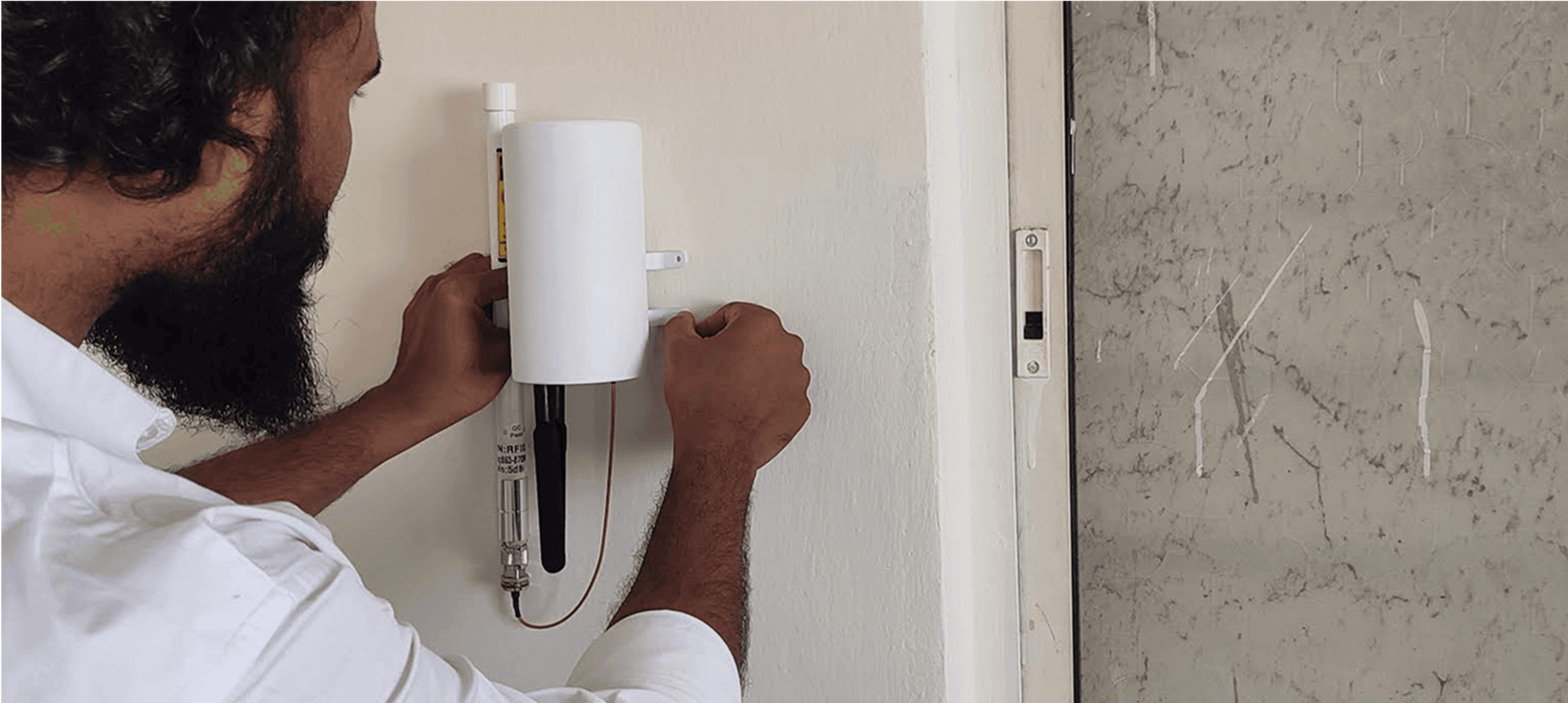
Multi-Point Calibration
Each AQI and temperature sensor was calibrated using standard instruments to ensure precise detection across different office zones.
Real-Time Data Verification
Live readings were cross-checked with manual instruments over a week-long observation period to confirm sensor reliability and response time.
Network Performance Validation
LoRaWAN signal strength and packet delivery rates were tested at multiple floor levels to guarantee stable indoor connectivity.
Dashboard & Alert Testing
End-to-end verification confirmed seamless synchronization between sensors, LoRaWAN gateway, and the facility’s SCADA dashboard.
Conclusion: Smart IoT Monitoring for Energy-Efficient Workspaces
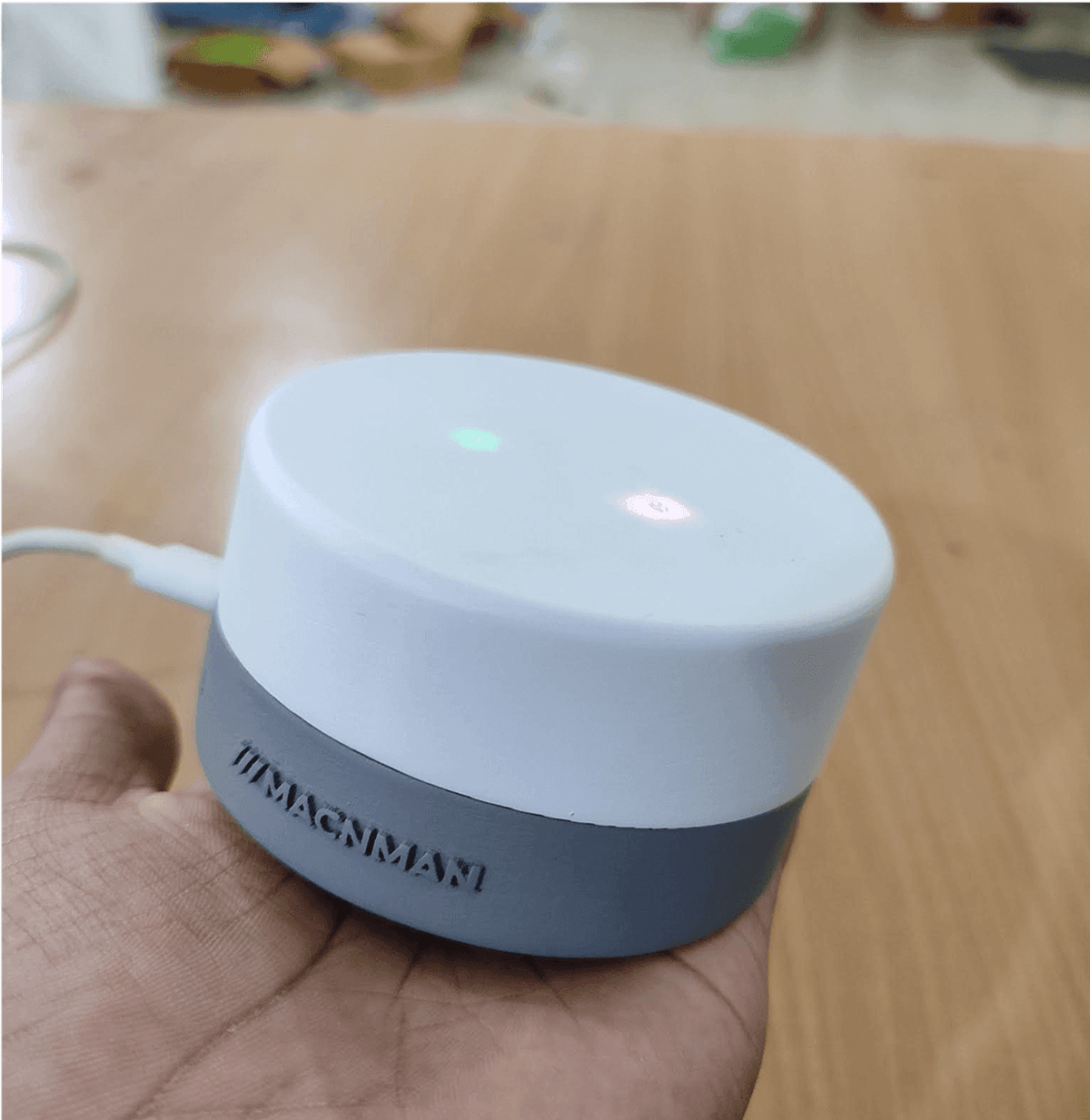
Our clients corporate office transformed its traditional facility into a data-driven, energy-efficient workplace with LoRaWAN-based air quality and temperature monitoring.
By continuously tracking CO₂, PM2.5, humidity, and heat distribution, the system enabled real-time insights for HVAC optimization, resulting in up to 20% reduction in energy consumption and improved indoor air quality.
Discover how smart IoT saves more energy




